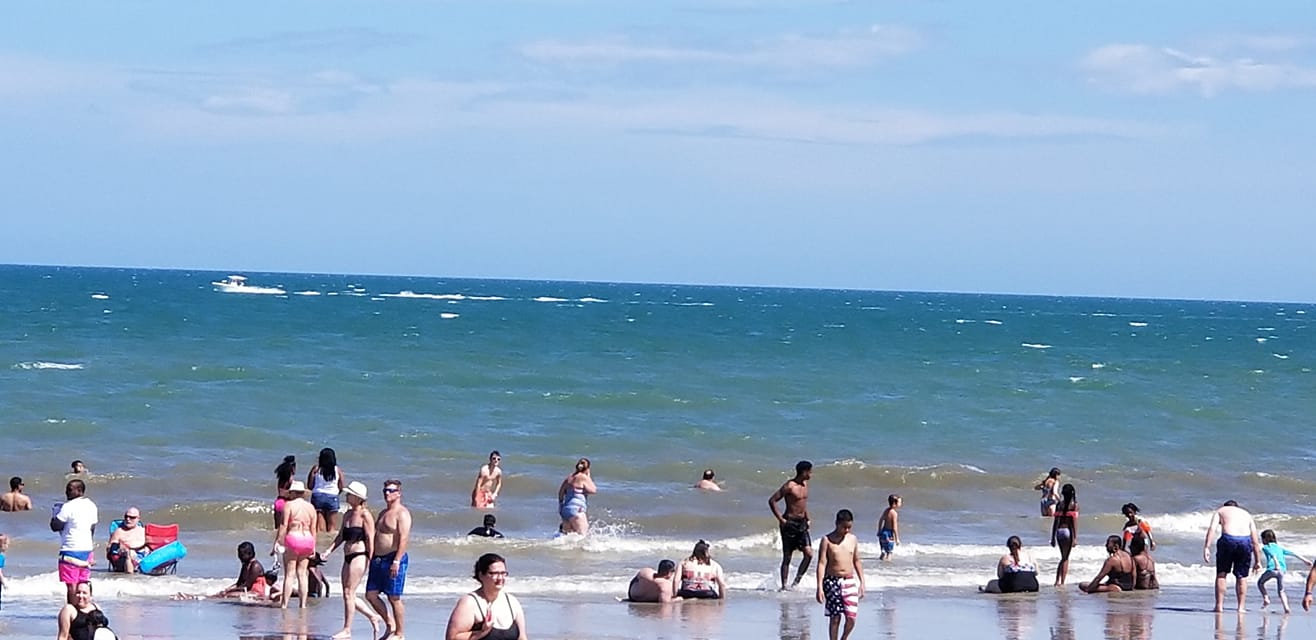When you come back from a Florida vacation, there’s a few things you’re supposed to have: a tan or a sunburn, a little jar of sand with some shells and maybe an overpriced trinket from a surf shop. One thing you don’t normally associate with coming home from a beach vacation is an itchy rash that lasts for weeks.
This summer, my family, my boyfriend and I drove from central Ohio to central Florida for my older sister’s wedding. The drive is about 15 hours long without breaks, and there were seven of us packed like sardines into my mom’s SUV.
The wedding was beautiful and stressful, and yeah, I cried. All the hoopla of the ceremony and reception was over in a few hours, but my family was ready to take the celebration to the beach. So the next day, we all packed up into the SUV and drove an hour to Cocoa Beach, a popular surfing beach on Florida’s Atlantic Coast.
We planned to go to the beach for a few hours, walk on the pier, and get dinner at a fresh-catch fish restaurant in town before heading back to our hotel in central Florida for the night.
For me, a Florida vacation is all about the beach, playing in the water, and soaking up some rays in the sand. So as soon as we found our spot on the beach next to the pier, I put on some sunscreen and ran straight to the water with my siblings. As we ran to the water, my mom half-jokingly warned that we shouldn’t touch anything that looked like a plastic bag, as it might be a jellyfish. We were only half-listening.
For the first few hours my siblings, my boyfriend and I jumped and played in the waves, looked out at the huge cruise ships that were headed to the nearby port of Cape Canaveral, and talked and laughed. Eventually, my mom and step-dad joined us in the water.
We were in the middle of a conversation about whether my little brother had actually peed in the water when I felt a sharp pinch and a slight burning on the back of my right thigh.
“Ouch,” I said. “I think a crab or something just pinched—”
Suddenly it felt like hot knives were running across the skin around my right ankle, and I knew instantly what was going on.
I yelled for my family to get out of the water as I felt another set of jellyfish tentacles brush against my left leg, leaving hot pain in its wake.
I squeezed my mom and stepdad’s hands as we walked quickly toward shore and the lifeguard station, where a someone was at the ready with a bottle of vinegar.
The lifeguard sprayed the angry, raised welts with the vinegar, but it didn’t give much relief. My legs looked like they’d been hit with a whip.
The lifeguard simply told us that the sting would “probably” be ok and gave me no other instruction on how to care for it.
After returning to our spot on the beach, my little sister pointed out that we should have been more careful, as a big purple flag was raised over the lifeguard station, meaning dangerous marine life are present. I saw at least five other people get treated by the nearby lifeguards for stings that day. I didn’t get back in the water.
Over the next few days, the welts on my legs lessened into small, round bumps that were no longer painful. Instead they were itchy, which was almost worse.
Because the lifeguard was little help, I did some research on my own. People in online forums said their itchy welts lasted anywhere from two weeks to a month after a sting. Some people end up with permanent scars.
As for relief, the only things that really help are hot baths and the anti-itch creams you would use on mosquito bites.
One thing you should never do is put urine on your sting. I learned through reading forums that urine can actually make a sting worse despite the legends. The best thing to put on any sting is vinegar; its acidity counteracts the jellyfish venom and gives some relief.
Luckily, the species of jellyfish that I came in contact with is not deadly to most adults, but there’s really no way to know that until a medical professional checks out the stings. While most dangerous jellyfish aren’t found in the United States, jellyfish can travel with the currents from other countries. Some people can go into anaphylactic shock from a sting, so it’s always best to air on the side of caution and seek out a medical professional or call 911.
It’s been a little over two weeks since my sting and the welts are still extremely visible and itchy when provoked. But now I know that I should pay attention to the flags posted by the lifeguards and perhaps carry a spray bottle of vinegar to the beach with me, just in case.


